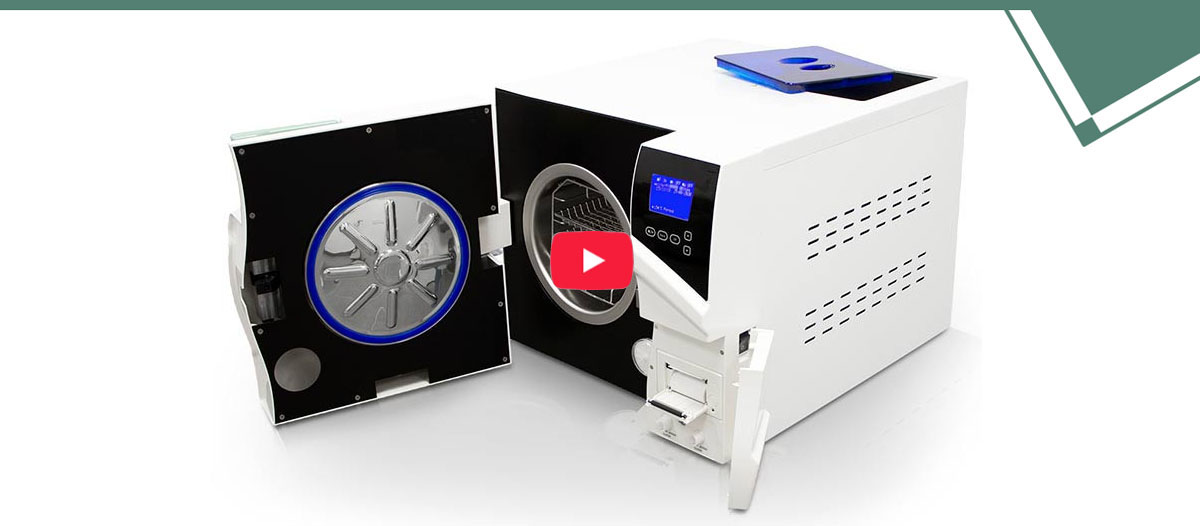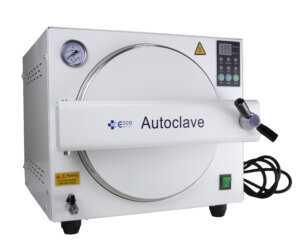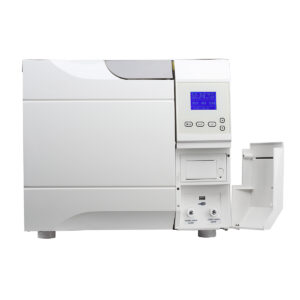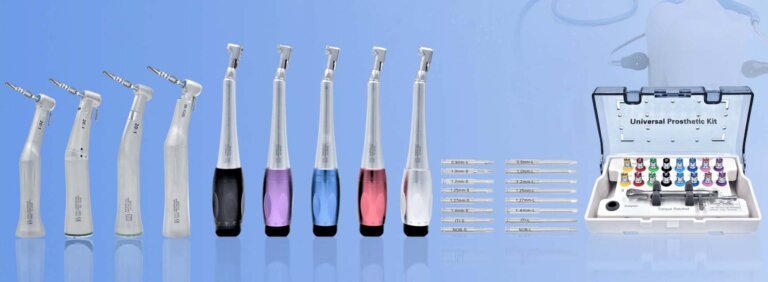High-Pressure Sterilizer Safety Guide
More worry free / Less effort / More competitive
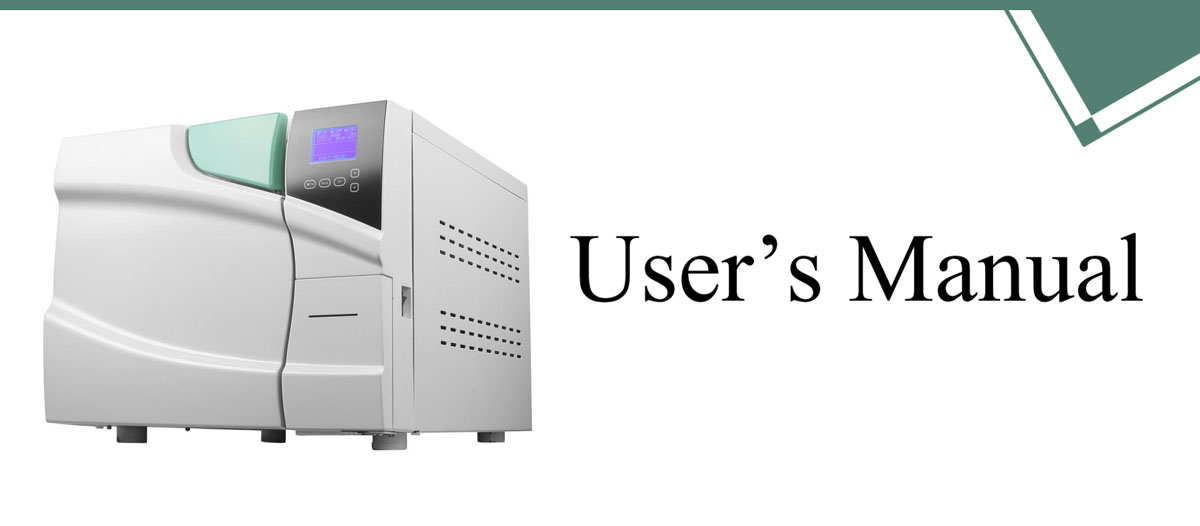
Keeping dental practices safe and hygienic starts with proper sterilization—it’s a step no clinic can afford to overlook. Among various sterilization methods, high-pressure sterilizers—also known as autoclaves—are the most effective and widely used devices. However, improper use can lead to equipment damage or even safety hazards. In this Autoclave safety precautions Guide, we’ll walk you through everything you need to know before operating an autoclave. From pre-use safety checks to daily maintenance tips, this guide will help you protect your dental equipment, your clinic, and your patients. At ESCO Dental, we are committed to providing reliable dental sterilization solutions to support your practice’s success.
Table of Contents
What is a High-Pressure Sterilizer?
A high-pressure sterilizer, commonly known as an autoclave, is an essential medical device used to sterilize instruments by applying high-pressure saturated steam. In dental clinics, sterilization is essential for making sure every instrument is thoroughly cleared of bacteria, viruses, fungi, and even the most resistant spores.
The autoclave works on a simple yet highly effective principle: it heats water to create steam under pressure. This steam reaches temperatures higher than boiling water, typically around 121°C to 134°C (250°F to 273°F), depending on the cycle. Under these conditions, microorganisms are destroyed efficiently within minutes.
Key Functions of a High-Pressure Sterilizer in Dental Clinics:
| Function | Description |
|---|---|
| Sterilization Efficiency | Eliminates 99.99% of all known pathogens on dental instruments. |
| Infection Control | Prevents cross-contamination between patients by ensuring sterile tools. |
| Compliance with Standards | Meets regulatory health and safety requirements in dental practices. |
| Equipment Protection | Proper sterilization extends the life of dental instruments. |
Without an autoclave, it would be nearly impossible to maintain the high standards of hygiene demanded in modern dental care. For this reason, every dental clinic relies on high-pressure sterilizers as a fundamental part of their infection control protocol.
At ESCO Dental, we offer top-quality dental autoclaves built to deliver reliable performance and meet the strictest safety standards—so your practice stays protected and fully compliant.
Safety Checks Before Operating a High-Pressure Sterilizer

Before using a high-pressure sterilizer, it’s important to carry out a careful safety check to make sure everything’s working as it should. Overlooking even a small issue could lead to malfunctions, damage your equipment, or pose a safety risk. That’s why routine maintenance and regular inspections aren’t just recommended—they’re essential.
Pre-Operation Safety Checklist:
| Inspection Item | What to Check | Why It Matters |
|---|---|---|
| Door Gasket (Sealing Ring) | Ensure it is intact, clean, and free of cracks or wear. | A damaged gasket can cause steam leaks and pressure loss. |
| Steam Generator Water Level | Verify that the water reservoir is filled to the appropriate level. | Insufficient water can lead to overheating and system failure. |
| Exhaust (Drain) Valve | Confirm that the valve is unobstructed and functioning properly. | A blocked valve may cause pressure buildup or incomplete cycles. |
| Temperature and Pressure Gauges | Check that the readings are stable and within normal operating ranges. | Abnormal readings can indicate system malfunction. |
| Chamber Cleanliness | Inspect the sterilization chamber for residues or blockages. | Debris can compromise sterilization efficiency. |
Important Reminder:
If any irregularities are found during these checks, do not start the sterilization cycle. Address the issues immediately or contact technical support to avoid potential accidents.
Safety Precautions During Operation of a High-Pressure Sterilizer
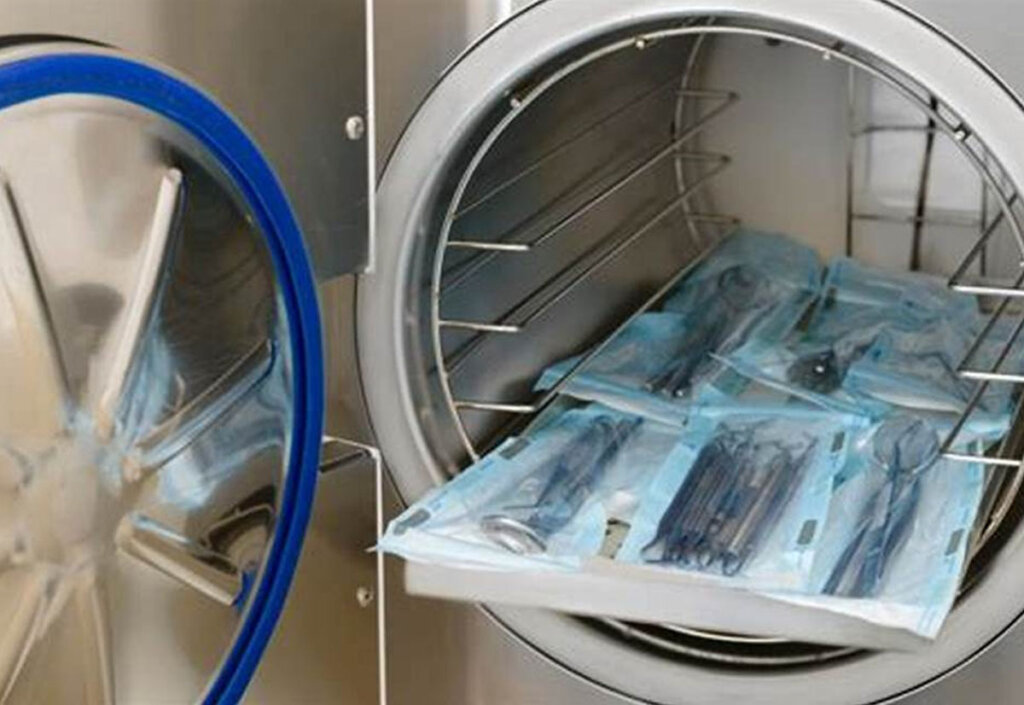
Once the high-pressure sterilizer is in use, strict adherence to Autoclave safety precautions is crucial to ensure both operator safety and effective sterilization. Using the sterilizer incorrectly can lead to incomplete sterilization, damage to your equipment, or, in some cases, even cause injury.
Key Safety Guidelines to Follow During Operation:
| Safety Measure | Description |
|---|---|
| Do Not Overload the Chamber | Load instruments in a single layer without overcrowding. |
| Ensure Proper Air Circulation | Arrange tools to allow steam to circulate freely within the chamber. |
| Set Correct Temperature and Time | Follow manufacturer-recommended settings (typically 121–134°C, 15–30 mins). |
| Never Open the Door Mid-Cycle | Opening the chamber during operation can cause severe burns or pressure release injuries. |
| Use Heat-Resistant Gloves | Always wear protective gear when removing sterilized instruments. |
Standardized operation protects your equipment and your staff.
Following these procedures reduces wear on the autoclave, prevents malfunction, and ensures compliance with health and safety standards.
At ESCO Dental, we strongly believe that proper training and clear operating procedures are key to safe and effective sterilization. That’s why we provide easy-to-follow user manuals and ongoing support—so your team can use our equipment with confidence and peace of mind.
Even with regular care and proper use, high-pressure sterilizers can sometimes run into problems. Being able to spot common issues early—and knowing how to handle them—goes a long way in keeping your clinic safe and avoiding more serious damage.
Typical Autoclave Malfunctions and Solutions:
| Malfunction | Description | Suggested Action |
|---|---|---|
| Insufficient Temperature | The autoclave fails to reach the required sterilization temperature. | Check heating elements and ensure water levels are adequate. Stop operation if problem persists. |
| Abnormal Pressure Levels | Pressure rises too high or remains too low. | Verify exhaust valves and gauges. Stop use and call service if unresolved. |
| Steam Leakage | Visible steam escaping from the door or valves. | Inspect the door gasket for damage. Replace if necessary. |
| Inability to Exhaust Steam | The machine cannot release pressure properly. | Check for blockages in the drain valve. Contact professional repair services. |
Important Notice:
If the malfunction cannot be easily resolved with basic checks, do not attempt to disassemble the machine yourself. Improper handling may cause further mechanical failure or pose serious safety risks. Always seek assistance from certified technicians.
How to Extend the Lifespan of Your Autoclave

Proper daily autoclave maintenance and care are crucial to ensuring the efficiency and longevity of your high-pressure sterilizer. A well-maintained autoclave not only improves sterilization performance but also reduces repair costs over time.
Autoclave Maintenance Tips:
| Maintenance Task | Frequency | Purpose |
|---|---|---|
| Clean Sterilization Chamber and Drain | After each use | Removes residue and prevents clogging or corrosion. |
| Inspect Sealing Gaskets and Valves | Weekly | Ensures airtight closure and safe pressure management. |
| Use Purified or Distilled Water | Every cycle | Prevents mineral buildup that can damage internal parts. |
| Perform Calibration Checks | Every 6–12 months | Maintains accurate temperature and pressure settings. |
| Check Door Lock Mechanism | Monthly | Ensures the door locks securely during operation. |
Good maintenance habits directly impact sterilization quality and equipment durability. Neglecting basic care can lead to frequent breakdowns and higher replacement costs.
Sterilizer accessories replacement time cycle
| Description | Execution time | |
| PHASE1 | 500 cycles or 1 year | |
| Bacteriological filter | H1.5 | |
| PHASE2 | 1000 cycles or 1years | |
| Bacteriological filter | ||
| Door seal | ||
| PHASE3 | 1500cycles 0r 2 years | |
| Bacteriological filter | H2.0 | |
| PHASE4 | 2000cycles or 2 year | |
| Bacteriological filter | H4.0 | |
| Door seal | ||
| Drain valve | ||
| Air-Vacuum choose valve | ||
| Vecuum pump | ||
| PHASE5 | 2500cycles or 3 year | |
| Bacteriological filter | H1.5 | |
| Safety valve | ||
| PHASE6 | 3000cycles or 3 year | |
| Bacteriological filter | H2.0 | |
| Door seal | ||
| PHASE7 | 3500cycles or 4 year | |
| Bacteriological filter | H1.5 | |
| PHASE8 | 4000cycles or 4 year | |
| Bacteriological filter | H2.0 | |
| Door seal |
At ESCO Dental, we offer not only high-quality dental autoclaves but also professional maintenance training and after-sales services to help you maximize the value of your investment.
Related Dental Products
How Can We Help?
START YOUR DENTAL MEDICAL INSTRUMENT ONE-STOP PURCHASING JOURNEY

